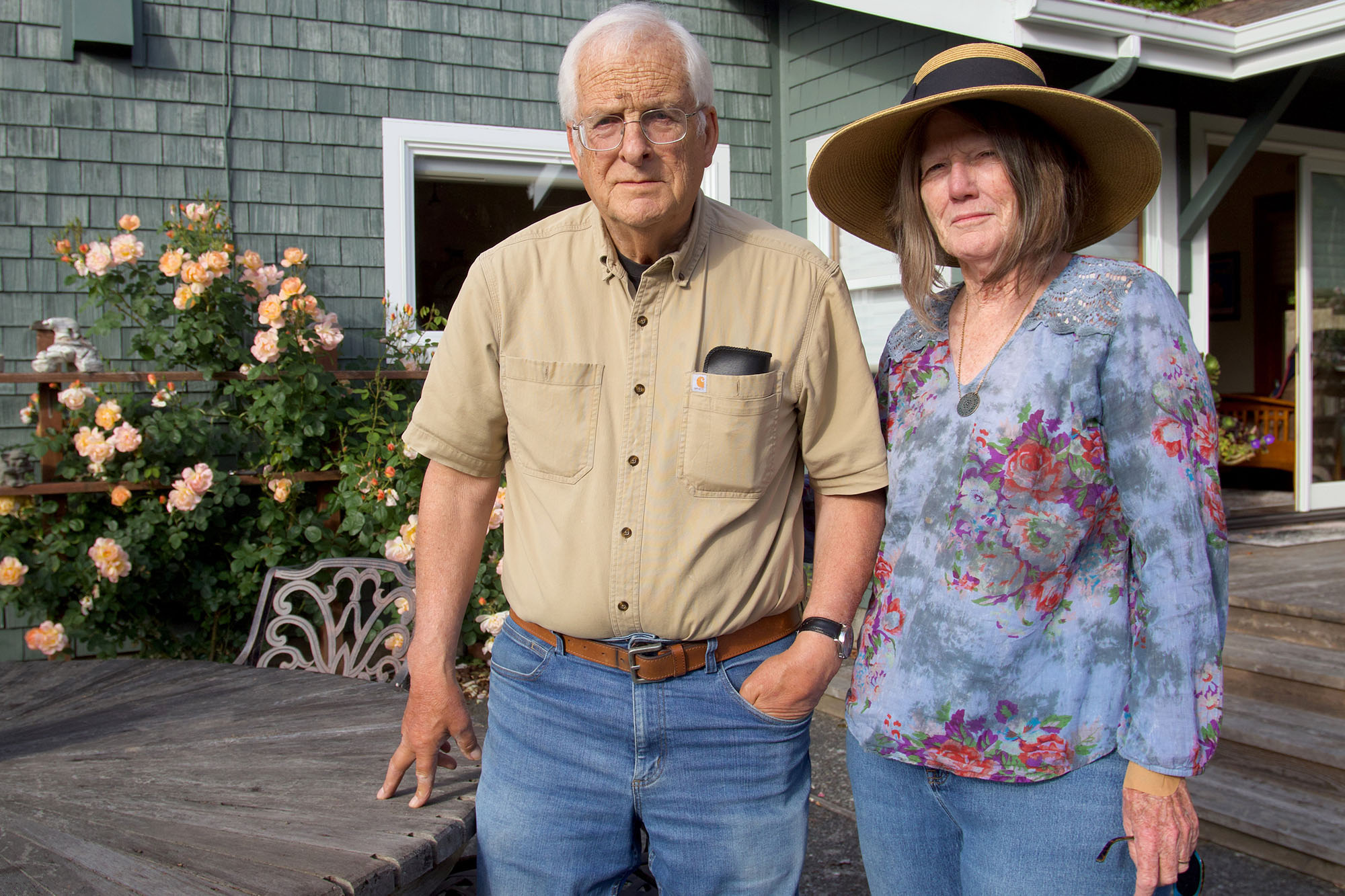
Starting a new job three months into a raging pandemic was difficult for Sheri Rosenblatt, a physician assistant who joined San Ysidro Health (SYHealth) in June 2020. At the large Federally Qualified Health Center (FQHC) system in San Diego County, on-the-spot decisions had to be made about problems Rosenblatt hadn’t encountered during training and years of practice. Yet one disconcerting memory continues to stand out: the silence in the clinic.

“I was sitting in a little room all by myself, and I thought, ‘This is really strange — I don’t know anyone, and I don’t have anyone to talk to,’” Rosenblatt said.
Rosenblatt was one of the scores of advanced providers during the pandemic’s first year who began working at SYHealth, which serves 110,000 patients at 50 sites. Rosenblatt was busy and felt isolated. She credits a new in-house buddy program for helping her during that crucial first year to build social connections within the staff — a strategy that can help to prevent burnout. The program was supported by the California Improvement Network (CIN), a community of health care organizations that identifies and distributes ideas for better care delivery through partner meetings, action groups, webinars, and other resources. CIN is funded by the California Health Care Foundation and managed by Healthforce Center at UCSF. Healthforce Center provides the project staff members who organize CIN’s partners, events, resources, and community engagement.
Helping new physicians, nurse practitioners, and physician assistants transition into career roles and stay in the field is a major priority for CIN. With that in mind, CIN has been focused since 2005 on preventing burnout and fostering resilience.
“I think it’s really sad that there’s a high turnover of physicians who spent their entire lives dedicated to learning about medicine, going through residency, and then deciding a few years out they don’t want to do this anymore,” said Aki Wen, DO, a family medicine physician at San Ysidro Health.
Nicole Howard, executive vice president of Health Quality Partners of Southern California and chief advancement officer of Health Center Partners of Southern California, said a CIN event in 2018 inspired her to turn her attention to burnout prevention. In January 2019, Howard arranged for physicians from Stanford Health and the Mayo Clinic to visit San Diego to make presentations on wellness to SYHealth and Health Center Partners member organizations. Howard then worked with these organizations to implement strategies and pilot projects that they learned about from CIN-sponsored speakers in 2020.
When SYHealth conducted an internal survey of its more than 100 providers in 2019, about half reported experiencing burnout. This mirrors national provider burnout rates at FQHCs, which tend to be higher than rates in private practices. In the survey, SYHealth providers said they didn’t feel like they could get the work accomplished by the end of the day and did a lot of work at home during what some of them called “pajama time.” Additional administrative burdens create burnout and are leading to departures from primary care.
This was roughly a year before the pandemic created even more grueling challenges for new providers like Rosenblatt.
New Hires at High Risk
Anyone who has watched a sitcom knows friendships at work offer valuable respite from daily obstacles and challenges.
“I had a very close relationship with the doctor who I shared an office with for about nine years,” said Kimberly Thomas, a physician assistant at SYHealth. “It really helped with my wellness, my wanting to come to work, and feeling connected.”
Quarantine, however, disrupted these friendships in the workplace, which are a proven buffer against burnout. Research shows these feel-good relationships increase engagement, performance, and retention. But many SYHealth physicians and providers said they no longer saw colleagues while caring for patients remotely from home.
Providers new to SYHealth didn’t get a chance to make friends before finding themselves working in near-empty clinics. There was no one to bump into in the corridor, to spontaneously meet at the coffee machine, or to chat with before a meeting.
Wen and his colleagues on the SYHealth wellness committee worried that doctors who had joined straight from residency might feel especially isolated and disengaged. They made it a priority to help them and others new to the staff.
Despite crushing workloads in the first year of the pandemic, the committee continued to meet virtually. They explored the easiest, quickest, evidence-based ways to support these new providers and “help them succeed and stay with SYHealth,” said Wen.
“We were looking into a buddy system and our associate chief medical officer Sharon Velasquez said, ‘Hey I go to the [Health Center Partners] meetings and they have this wellness grant. It’s a little bit of funding you may be able to get for your buddy program,’” said Wen.
In January 2021, SYHealth launched its first buddy system supported by a grant from the California Improvement Network through Health Center Partners — a small pilot that paired 12 new providers with 12 seasoned ones. As soon as Rosenblatt received the email from Wen about the program, she signed up. So did Thomas. Wen paired them.
Friendship as Fuel
Initially, Rosenblatt’s questions for Thomas centered on policies, procedures, and how to navigate unfamiliar systems. Her questions evolved as the two grew closer, albeit at a distance. Working at different SYHealth clinics, sometimes remotely, they largely relied on messaging each other in short bursts. Thomas describes their buddyhood as “solidarity.”
“It wasn’t just, ‘Yeah, I have somebody I can talk to, somebody I can support,’” said Thomas. “It was a real conversation around burnout. Like, ‘What do you do when you feel overwhelmed by your schedule? How would you rate yourself with regard to burnout? What are you doing for yourself outside of work?’ We were encouraging each other away from burnout.”
New hires like Susana Acevedo, MD, who recently relocated to San Diego, appreciated how her buddy Deborah Rana, MD, familiarized her with the area and organization. Rana also served as a trusted sounding board. They first met face-to-face at Acevedo’s home, sharing snacks that Rana picked up with the $90 stipend cards each buddy received through the CIN grant to use on a wellness-related activity.
For Rana, the friendship that developed was fuel. “It was inspiring to be a cheerleader for each other, whether cheering on exciting things, or just, ‘I hear you, that sounds rough.’”
That fuel is crucial when providing patient care.
“There’s a direct relationship between feeling like you have a safe person or support in your workplace and then being able to walk into the room with a patient and do good work,” said Thomas.
“Low-Key” Buddy Program
When the six-month buddy pilot wrapped up in June 2021, all the surveyed providers said they felt better connected to colleagues, and more than half reported wanting to participate again.
Much of the buddy program’s success came because it was easy to adopt.
“I liked that this was very low-key,” said Rana. “It wasn’t this huge to-do list of ‘you must talk about X, Y, and Z.’”
Given rising burnout during the first year of the pandemic, Wen’s peers and colleagues at CIN wanted to make the process simple and expeditious. They were also eager for CIN partners to immediately start testing a few evidence-based strategies related to provider wellness.
Each year, the health care organizations that make up CIN, known as partners, determine what problems they’re struggling with and come together in physical and virtual meeting rooms to delve into solutions. As peers, they candidly share their experiences with one another: the good, the bad, and the surprising.
The revelations, breakthroughs, and “you-can-do-this” encouragement evident in these interactions may explain why partners find such value in the CIN community.
“Partners hear information and act on it differently when it comes from a peer organization than from a textbook,” said Kathryn E. Phillips, a senior program officer at the California Health Care Foundation whose grant portfolio includes CIN. The network’s approach has been successfully applied to issues ranging from provider burnout to integrated behavioral health. CIN is the only network in California that brings together safety-net and commercial health care provider organizations, health plans, quality improvement organizations, payers, and regulators, Phillips said. “Together, these organizations can make change.”
For example, as racial health disparities became even more conspicuous during the pandemic through case rates and lack of access to vaccinations, CIN partners organized a workgroup that published A Toolkit to Advance Racial Health Equity in Primary Care Improvement.
A Little Program Leads to Bigger Things
The success of SYHealth’s first buddy program has led to its expansion. It relaunched, on a rolling basis, in June 2022. This time, instead of a wellness committee of volunteers, SYHealth dedicated wellness staff and financial resources to work on an array of related initiatives.
All of this was thanks to a federal grant. In January 2022, SYHealth and two other San Diego–based community clinics affiliated with Health Center Partners received a combined $2.9 million wellness grant from the US Health Resources and Services Administration to combat staff burnout. The funds are being used to hire dedicated wellness staff and roll out an array of wellness-related initiatives and programs.
Without the buddy system, Sara King, director of program development at SYHealth, believes they may not have been in a position to secure such an investment.
“The buddy system is one of those reminders that small things can have such a big impact,” King said.
CIN’s Next Stage
For 17 years, CIN has helped diverse groups of health care professionals “catch each other up and push the whole field forward,” said Phillips.
Looking to the future, CIN is planning to include community-based organizations, such as housing providers, as partners to help the network address social needs that affect health outcomes. Following the lead of CalAIM, which integrates nonmedical and medical care and services, CIN’s upcoming expansion intends to help advance a more coordinated, people-centered, and effective care approach.
Healthforce Center at UCSF will begin recruiting health care organizations and community-based organizations for CIN’s next grant cycle in August. Subscribe to the CIN newsletter for updates.
Authors & Contributors

Aisling Carroll
Aisling Carroll is a Bay Area–based freelance writer and former journalist who covers health care, digital health, hospitals, and the patient-doctor relationship. Her work has been published in Stat News, HuffPost, Business Insider, Congressional Quarterly, and others. Carroll received a bachelor’s degree in political science from UC San Diego.

David Poller
David Poller has worked as a photojournalist at newspapers and international wire services from Miami to Alaska. He shoots editorial and commercial assignments in Southern California and is a photo editor for the New York Times. Poller is a member of the National Press Photographers Association and the Association of LGBTQ Journalists.





